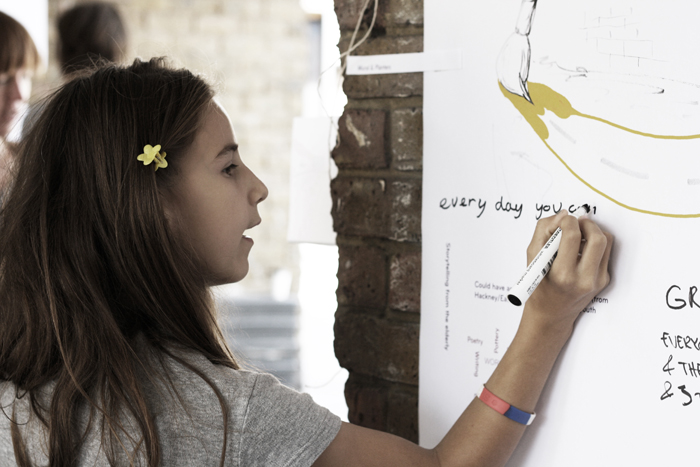
To launch the Voices series, I would like to discuss three concepts which lie at the heart of what we’re trying to achieve at Clear Village. They are, in a sense, the DNA of our organisation. I believe that they are also part of a wider trend in placemaking and point the way towards how we can build more resilience in our communities and our cities.
SCALE
As our name suggests, Clear Village is all about focussing on the micro scale. The traditional large-scale approach of masterplanning might have made sense in the age of the car, but in the age of Facebook, Wikipedia and Occupy it is increasingly obsolete. We are all aware of the tendency of masterplanning to create commercial ghost towns. And on top of that, as we try to show in the Clear Village Observatory, we are seeing a tremendous rise in small-scale community-led urban interventions around the world. Technology is a great enabler in this respect. In the same way that anyone now has access to the means to 3D print a gun, we also have access to a sweep of tried-and-tested tools and ideas to engineer neighbourhood transition. As a result, our sense of the importance and the potential of the micro scale is changing. We are beginning to see that resilience at the city level is not created through macro interventions in isolation, but rather through a mosaic of interventions at the micro level involving multiple stakeholders.
CREATIVE REGENERATION
Another recent development in placemaking has been the move towards transdisciplinarity. Professionals in the built environment are working more and more closely with what used to be considered unrelated professions. Environmental, social, economic and sustainability approaches are being merged and enabling more holistic solutions to be developed. But I think that we can take this process even further and this is where creative regeneration comes in. It basically means borrowing from different fields (technology, art, design, social innovation and so on) to develop unexpected but compelling solutions on the micro level: solutions that build on local assets, address local needs, and provide a focal point for communities to rally around. Ultimately it is about creating new narratives when the old narratives have become stale and can no longer motivate and inspire people. Or when, to phrase it slightly differently, a bug has crept into the operating system.
RECODING
This takes me on to the notion of recoding. The hardware of our cities has grown increasingly complex and new software is needed to cope with the challenge. The software of traditional town planning was developed by organisations that were pre-digital and pre-resilience, but we know now that we can do things differently. And just as the software industry has largely gone open source, placemaking needs to go open source, too. In my opinion, the most successful and resilient cities of the future will be the ones that are best at embracing this open-source process: at drawing on the intelligence and creativity of local communities and enabling people to collaborate in a curated manner to create place capital. The Olympics is an interesting example of this. After the massive initial investment, we now see the London Legacy Development Corporation borrowing from social innovation and grass-roots movements to make the change from the Olympic to the post-Olympic age. I have just come back from a conference in Rio which may go through a similar transition. With the 2016 Olympics coming up, there is certainly a risk of large-scale gentrification. On the other hand, there is also a chance that the huge amount of innovation that’s been taking place in the favelas might be able to cross over into the city and help the recoding process.
The concept of sustainability might have been on everyone’s lips until COP15, but I am pleased that it is making way for the much more helpful notion of resilience. One of the key aspects of resilience, of course, is that it isn’t just about crisis management and mitigation but also about prevention. I think that the three concepts I have briefly sketched out- focussing on the micro scale, making use of creative regeneration and recoding our city’s broken operating systems through collaborative processes- are important elements that can help us build systemic health in our cities and prevent major issues like social fracture from arising in the first place. It may sound odd to feel activist about a term like ‘homeostatis’, but it is something I believe we should be passionate about: building homeostatic cities where we can live and breathe and enjoy a certain freedom from the pressures of the global economy: from the numbers, and baselines, and short-term thinking that have been imposed on us and trapped us for way too long.